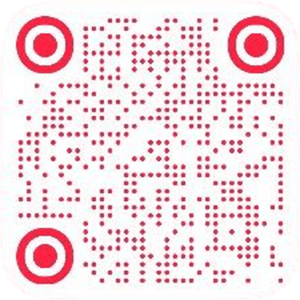A non-variable font requires one master, while variable fonts need multiple masters as needed for interpolation to work within the variation space.
Masters
For a variable font, be sure to include masters with axis locations that allow interpolation. It is common to add masters at the extremes (minimum and maximum axis coordinates), but this is not always necessary. Just remember, a variable font encompasses a whole design space, which is consist of regions which are always rectilinear. A font with two axes, weight and width, can work just fine with these masters:
| Master | Weight | Width | |
| Light | 300 | 100 | |
| Regular (default) | 400 | 100 | |
| Bold | 700 | 100 | |
| Condensed | 400 | 75 | |
| Ultra-expanded | 400 | 200 |
So, it might not be needed to include corner masters, like Bold Ultra-condensed (Weight 700, Width 200). And if you later discover there is a need for it, you can add such master later in the design process.
Some glyph outlines need additional layers, e.g. outlines with curves that have inflection points (a change in direction of curvature), like “S”. Then add an additional master and only add layers for these outlines. No need to add layers for all glyphs, if they already interpolate the way you want.
Name
The name of the masters is only used while designing the font. It is not part of the exported font. Therefor localisation is not supported here.
Axis Location
Each master has a particular position within the variation space of a variable font. The dimensions of the whole space is defined by the axes. The axis location values are design scale coordinates. The user scale coordinates may be different if an axis has mappings.
Metrics for Horizontal Writing Mode

Typo Ascender
The typographic ascender for this font. Remember that this is not the same as the Ascender value in the Metrics tab, which Apple defines in a far different manner.
The suggested usage for Typo Ascender is that it be used in conjunction with units per em to compute a typographically correct default line spacing. The goal is to free applications from Macintosh or Windows-specific metrics which are constrained by backward compatibility requirements. These new metrics, when combined with the character design widths, will allow applications to lay out documents in a typographically correct and portable fashion.
For CJK (Chinese, Japanese, and Korean) fonts that are intended to be used for vertical writing (in addition to horizontal writing), the required value for Typo Ascender is that which describes the top of the design space (also known as em-square). For example, if the design space of the font extends from coordinates 0,-120 to 1000,880 (that is, a 1000×1000 box set 120 design units below the Latin baseline), then the value of Typo Ascender must be set to 880. Failing to adhere to these requirements will result in incorrect vertical layout.
Typo Descender
The typographic descender for this font. Remember that this is not the same as the Descender value in the Metrics tab, which Apple defines in a far different manner.
The suggested usage for Typo Descender is that it be used in conjunction with units per em to compute a typographically correct default line spacing. The goal is to free applications from Macintosh or Windows-specific metrics, which are constrained by backward compatibility requirements. These new metrics, when combined with the character design widths, will allow applications to lay out documents in a typographically correct and portable fashion.
For CJK (Chinese, Japanese, and Korean) fonts that are intended to be used for vertical writing (in addition to horizontal writing), the required value for Typo Descender is that which describes the bottom of the design space (aka, em-square). For example, if the design space of the font extends from coordinates 0,-120 to 1000,880 (that is, a 1000×1000 box set 120 design units below the Latin baseline), then the value of Typo Descender must be set to -120. Failing to adhere to these requirements will result in incorrect vertical layout.
Typo Line Gap
The typographic line gap for this font. Remember that this is not the same as the Line Gap value, which Apple defines in a far different manner.
The suggested usage for Typo Line Gap is that it be used in conjunction with units per em to compute a typographically correct default line spacing. Typical values average 7-10% of units per em.
Win Ascent
The ascender metric for Windows. This, too, is distinct from Apple’s Ascender value and from the Typo Ascender value. Win Ascent is computed as the yMax for all characters in the Windows ANSI character set. Win Ascent is used to compute the Windows font height and default line spacing. For Symbol fonts, it is the same as yMax.
Win Descent
The descender metric for Windows. This, too, is distinct from Apple’s Descender value and from the Typo Descender value. Win Descent is computed as the -yMin for all characters in the Windows ANSI character set. Win Descent is used to compute the Windows font height and default line spacing. For Symbol fonts, it is the same as -yMin.
Ascender (Macintosh-specific)
Typographic ascent
Descender (Macintosh-specific)
Typographic descent
Line Gap (Macintosh-specific)
Typographic line gap. Negative Line Gap values are treated as zero.
Tip: To automatically calculate ascender and descender values press the Calculate button. It will try to preserve original line spacing, so it might also affect line gap.
x-Height
This metric specifies the distance between the baseline and the approximate height of non-ascending lowercase letters measured in Funits. This value would normally be specified by a type designer but in situations where that is not possible, for example when a legacy font is being converted, the value may be set equal to the top of the unscaled and unhinted glyph bounding box of the glyph encoded at U+0078 (LATIN SMALL LETTER X). If no glyph is encoded in this position the field should be set to 0.
This metric, if specified, can be used in font substitution: the xHeight value of one font can be scaled to approximate the apparent size of another.
CapHeight
This metric specifies the distance between the baseline and the approximate height of uppercase letters measured in Funits. This value would normally be specified by a type designer but in situations where that is not possible, for example when a legacy font is being converted, the value may be set equal to the top of the unscaled and unhinted glyph bounding box of the glyph encoded at U+0048 (LATIN CAPITAL LETTER H). If no glyph is encoded in this position the field should be set to 0.
This metric, if specified, can be used in systems that specify type size by capital height measured in millimeters. It can also be used as an alignment metric; the top of a drop capital, for instance, can be aligned to the CapHeight metric of the first line of text.
Italic Angle (degrees)
Italic angle in degrees from the vertical. Zero for upright text, positive for text that leans to the right (forward).
Tip: you can type “x / y” (run/rise) for italic angle and caret slope. Be sure to press Enter to let FontCreator know you intend to set the value as run/rise.
Caret Slope (degrees)
The slope of the caret in degrees from the vertical. The caret is the mark used to indicate where something is to be inserted into a text. It is usually represented by a blinking vertical bar, but with italic (or slanted) fonts it can have an angle.
Caret Offset
The amount by which a slanted highlight on a glyph needs to be shifted to produce the best appearance. Set to 0 for non-slanted fonts. FontCreator uses this value to offset the left side-bearing of glyphs.
Use typo metrics for line spacing
If set, it is strongly recommended to use Typo Ascender – Typo Descender + Typo Line Gap as a value for default line spacing for this font.
Metrics for Vertical Writing Mode

In general vertical metrics are only useful with fonts that are used for vertical writing. So we recommend to only include them in CJK (Chinese, Japanese, and Korean) fonts. If enabled, it is also useful to show top and bottom bearings. You can enable it within the Metrics Options dialog. Use Auto Metrics to set vertical spacing of a range of glyphs.
Vertical Typo Ascender
The distance from the ideographic em-box center baseline for the vertical axis to the right of the ideographic em-box and is usually set to 0.5*units_per_em.
Vertical Typo Descender
The distance from the ideographic em-box center baseline for the vertical axis to the left of the ideographic em-box and is usually set to -0.5*units_per_em.
Vertical Typo LineGap
The vertical typographic gap. An application can determine the recommended line spacing for single spaced vertical text for an OpenType font by the following expression: ideographic em-box width + Vertical Typo LineGap.
Vertical Caret Slope
The slope of the caret in degrees. Set value equal to 90 (a horizontal caret) for regular/nonslanted fonts.
Vertical Caret Offset
The amount by which the highlight on a slanted glyph needs to be shifted away from the glyph to produce the best appearance. Set value equal to 0 for regular/nonslanted fonts.
Additional Metrics

Note: Word processors that support OpenType layout features may use the Subscript (subs) and Superscript (sups) features, if available in the font.
Subscript horizontal font size
The recommended horizontal size in font design units for subscripts for this font.
Subscript vertical font size
The recommended vertical size in font design units for subscripts for this font.
Subscript x offset
The recommended horizontal offset in font design units for subscripts for this font.
Subscript y offset
The recommended vertical offset in font design units from the baseline for subscripts for this font.
Superscript horizontal font size
The recommended horizontal size in font design units for superscripts for this font.
Superscript vertical font size
The recommended vertical size in font design units for superscripts for this font.
Superscript x offset
The recommended horizontal offset in font design units for superscripts for this font.
Superscript y offset
The recommended vertical offset in font design units from the baseline for superscripts for this font.
Strikeout position
The position of the strikeout stroke relative to the baseline in font design units, this positive values represent distances above the baseline. Aligning the strikeout position with the em dash is suggested. Note, however, that the strikeout position should not interfere with the recognition of standard characters, and therefore should not line up with crossbars in the font. For a Roman font with a 2048 em square, 460 is suggested.
Strikeout Thickness
Width of the strikeout stroke in font design units. This field should normally be the width of the em dash, and should also match the underline thickness. For a Roman font with a 2048 em square, 102 is suggested.
Underline Position
This is the suggested distance of the top of the underline from the baseline (negative values indicate below baseline).
Underline Thickness
Suggested value for the underline thickness. In general, the underline thickness should match the thickness of the underscore character ($5F), and should also match the strikeout thickness.
Calculate
The calculate button calculates the values so that they look correct in Microsoft Word.
Note: It is up to word-processing software to use these values. However, be aware that not all software uses these values uniformly, so when superscripts, subscripts, strikeout, and underline look correct in one application, they might look wrong in another application.

Hinting
This describes the preferred rasterization techniques for the typeface when it is rendered on grayscale-capable devices. It also has some use for monochrome devices, which may use the table to turn off hinting at very large or small sizes, to improve performance. It was invented for screen output and will not be used by printer drivers.
Note: smoothing is optional and only works with TrueType based outlines, so it will not be included if you export fonts with CFF based outlines.
If there are no ranges defined in a typeface, the rasterizer may apply default rules to decide how to render the glyphs on grayscale devices. The rasterizer will use the ClearType related values, if ClearType is enabled.
At very small sizes, the best appearance on grayscale devices can usually be achieved by rendering the glyphs in grayscale without gridfitting. At intermediate sizes, gridfitting (also known as hinting) and monochrome rendering will usually produce the best appearance. At large sizes, the combination of gridfitting and grayscale rendering will typically produce the best appearance. Click the Generate button to get smoothing settings based on these recommendations.
To add a new range, press the Add button. To remove a range, select it and press the Delete button.
Note
A note may be useful for you as font designer, but it is not part of the exported font.
See also:
 猫啃网
猫啃网





